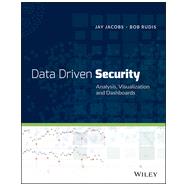Uncover hidden patterns of data and respond with countermeasures
Security professionals need all the tools at their disposal to increase their visibility in order to prevent security breaches and attacks. This careful guide explores two of the most powerful data analysis and visualization. You'll soon understand how to harness and wield data, from collection and storage to management and analysis as well as visualization and presentation. Using a hands-on approach with real-world examples, this book shows you how to gather feedback, measure the effectiveness of your security methods, and make better decisions.
Everything in this book will have practical application for information security professionals.
- Helps IT and security professionals understand and use data, so they can thwart attacks and understand and visualize vulnerabilities in their networks
- Includes more than a dozen real-world examples and hands-on exercises that demonstrate how to analyze security data and intelligence and translate that information into visualizations that make plain how to prevent attacks
- Covers topics such as how to acquire and prepare security data, use simple statistical methods to detect malware, predict rogue behavior, correlate security events, and more
- Written by a team of well-known experts in the field of security and data analysis
Lock down your networks, prevent hacks, and thwart malware by improving visibility into the environment, all through the power of data and Security Using Data Analysis, Visualization, and Dashboards.








